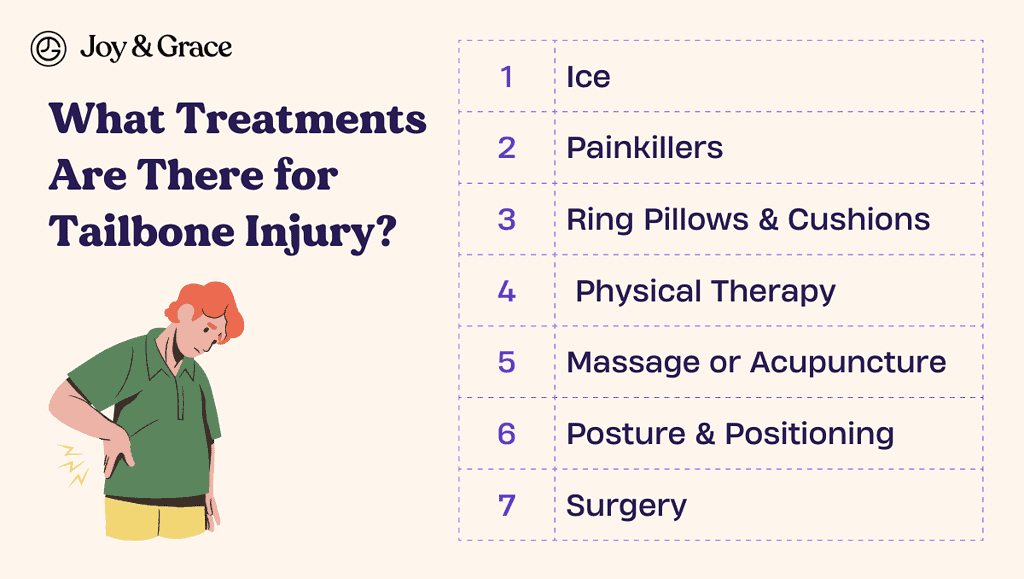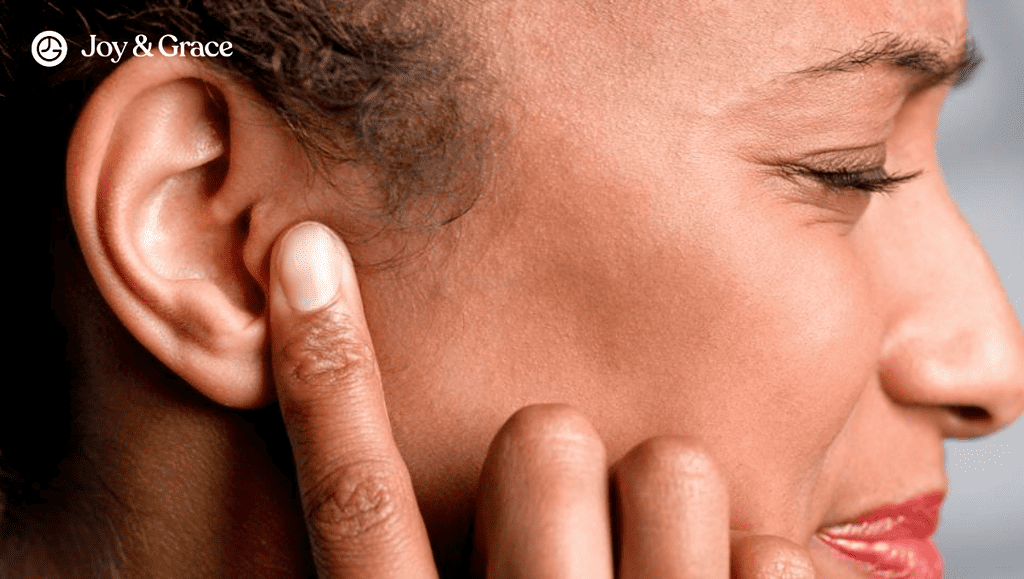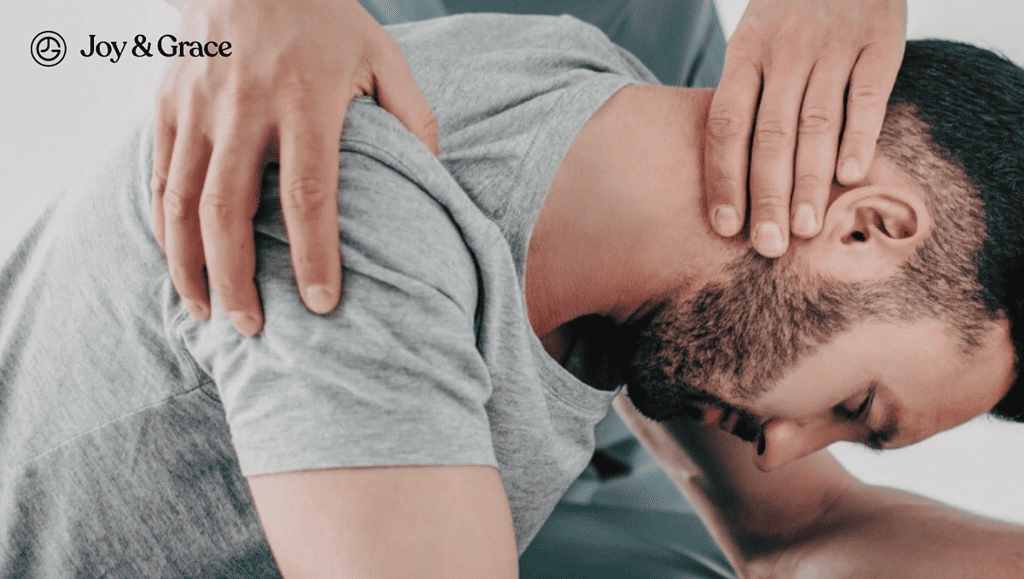Everyone's had a moment where they slipped on a wet floor or an icy sidewalk during the winter. For runners, skaters, and anyone with an active lifestyle, landing on your tush is something that's par for the course. You wince in immediate pain, utter some choice words, and bounce right back. And off you go, resuming your regularly scheduled programming.
But some falls hurt more than others. Often, a sore butt is no big deal, but there are times when impact might send a literal shock up the spine. This shock can affect not only the tailbone, also known as the coccyx, but can also have indirect consequences on the neck.
Can a Tailbone Injury Affect Your Neck?
Yes, a tailbone injury (coccyx injury) can affect your neck, both directly and indirectly. There are three primary mechanisms for how that can happen:
- The type of injury that affected your tailbone could’ve also potentially harmed your neck, even if you initially didn't notice it.
One type of injury that could hurt both the tailbone and neck is whiplash injuries. And guess what? Delayed neck pain is commonly associated with whiplash injuries.
- When a person experiences a sudden impact or injury, such as falling on their tailbone, the body's natural response is to protect itself by tensing the muscles. This reflexive muscle spasm can also occur in the neck muscles, especially if the fall or impact is forceful.
The muscle spasms in the neck can lead to increased muscle tension, straining of the connective tissue, stiffness, discomfort, and, ultimately, neck pain.
- An existing tailbone injury can lead to adopting uncomfortable sitting positions, increasing the risk of neck pain due to poor posture.
In summary, a tailbone injury can affect the neck directly and indirectly.
Whiplash injuries, reflexive muscle spasms, and poor posture due to an existing tailbone injury can contribute to neck pain. It is important to be aware of these connections and seek appropriate medical treatment for comprehensive recovery and pain management.
When Should I Worry About Neck Pain After a Fall?
You should visit your health care provider if:
- The pain in your tailbone (coccyx) hasn't improved after a few weeks of home treatments,
- It's getting in the way of your daily life,
- You have a fever, pain in your tailbone, and pain in another place, like your stomach or lower back,
If you want to read more, we have an extended article about neck pain after a fall here.
What Injuries Can You Get from Falling on Your Tailbone?
Since your tailbone is between your spine and hip bones, it takes the vertical force when you sit down or fall. Usually, this helps support your body weight and protects your spinal cord.
When you fall straight onto your tailbone, it can bruise or even break.
Bruising a tailbone may feel similar to a pulled muscle or sprain. The area will feel sore and very sensitive to touch and weight. When the force on the tailbone is too great, it can break your tailbone (coccygeal fracture).
When you fall on your rear end, the force travels up along the spine. The muscles in the back and neck also tense and stiffen in reaction, while the spine and tailbone try to absorb much of the impact.
Additionally, as we explained earlier, whiplash can happen when your head snaps rapidly back and forth during your fall. This rapid motion can stretch the soft tissues around your neck and damage them. This can lead to strains or soreness that can begin after the fall and last for a while afterward.
What Are Symptoms of A Bruised Tailbone?
A few different symptoms can hint that you have injured your tailbone. You may feel pain when you sit, lie down, change positions, or put pressure on the area around your tailbone. It might be so sensitive that you have trouble sitting still for extended periods of time. You may notice bruises or swelling in the area around the tailbone. These things can make it hard to stand up, walk, and move around normally.
What Are the Symptoms of A Damaged Coccyx?
A broken coccyx can feel like a bruised tailbone, but the coccyx pain and other symptoms tend to worsen and last longer.
There is a higher chance that different parts of the body, like the back, may also have injuries. Nerve damage is also more likely, and there may be problems related to the broken tailbone.
In the worst cases, the spine could be affected, leading to pain, numbness, and paralysis.
Can a Tailbone Injury Cause Nerve Pain?
Even though the tailbone is at the end of the spine, a bad fall can still hurt or inflame the nerves in the lower back and legs.
If vertebrae or discs above the tailbone are crushed or hurt, spinal nerve pain can happen along the back. This could feel like numbness, shooting, or sharp pain.
In the worst cases, it could paralyze the parts of the body connected to the damaged nerves.
What Are the Complications of A Tailbone Injury?
Most of the time, injuries to the tailbone are only at the point of impact. However, a tailbone injury can sometimes cause a few other problems.
One of the most common problems is pain that doesn't go away. Sitting, standing, or walking can be problematic because the pain can be a constant dull ache or come and go.
Let's say that the fall that caused the injury was particularly nasty.
In that case, nerve damage could happen, which would cause tingling, numbness, or weakness, usually in the legs or feet. Skin infections could occur if the injury caused a dirty cut or wound.
Lastly, a broken tailbone can make it hard to urinate. This is usually due to spasms in the pelvic floor muscles, making it hard to relax and let urine flow.
What Treatments Are There for Tailbone Injury?

Fortunately, conservative treatment of coccyx pain works in 90% of cases. Furthermore, many cases even resolve on their own without the need for medical intervention.
That said, there are a few different ways you can treat a tailbone injury. The kind of treatment will depend on how badly the tailbone is hurt.
Ice or Heat
If you hurt your tailbone, you can use ice as first aid. This can help cut down on inflammation and acute pain. After a while, you can also incorporate heat.
Painkillers
After doctors perform a physical exam to assess your tailbone pain, they might first give you pain medicine. This can aid in pain relief and reduce swelling from the injury.
Ring Pillows & Cushions
You could also use ring pillows or cushions to take pressure off your coccyx. Changing how you rest and sleep can also help ease pain and discomfort.
Physical Therapy
In some cases, physical therapy can help strengthen the muscles around your tailbone and keep them from getting hurt again.
Massage or Acupuncture
People with coccygeal pain may benefit from alternative treatments, such as massages or acupuncture.
Posture & Positioning
Also, it's important not to sit for too long and to stand, or to sit with good posture. Also, you may consider finding a sleeping position that’s more comfortable for you, too.
Injections
People with persistent pain in their tailbone may benefit from local injections.
In a coccygeal injection, a numbing agent (like lidocaine) and a steroid are used to reduce inflammation around the coccyx and the sacrococcygeal junction to provide relief. The local anesthetic acts as a nerve block to temporarily stop the pain, while the steroid is an anti-inflammatory medicine.
Surgery
Most of the time, surgery is only suggested when all other treatments have failed.
How Long Does a Bruised Tailbone Take to Heal?
Tailbone pain, or coccydynia, typically goes away on its own. Most people with coccydynia get better within a few weeks. When the injury is more severe or affects other parts of the body, recovery will take longer and may require more help.
Can I Workout with A Bruised Tailbone?
Physical exercise can make your muscles more powerful and flexible, but it can be hard to do if you are hurt or can't move around much. Some people who have hurt their tailbones still exercise regularly.
If your tailbone is bruised, you should be extra careful when you work out. Avoid exercises that twist your body, like sit-ups, crunches, leg lifts, and lunges.
Some exercise programs and stretches can help ease pain in the tailbone. These include:
- Sitting on an exercise ball and roll back and forth to massage the area around your tailbone.
- Laying on your back with your knees bent and your feet flat on the floor. Put a pillow under your tailbone for support. Roll your knees slowly from side to side.
- Laying on your stomach with a pillow under your hips for support. Gently arch your back.
- Getting down on all fours with your hands under your shoulders and your knees under your hips. Slowly arch your back.
If you have severe pain, you should talk to a doctor or physical therapist before starting a new exercise or stretching plan.
What Happens if A Broken Tailbone Goes Untreated?
If you don't get treatment for a broken tailbone, the pain and other symptoms could worsen. When this happens, the chance of developing complications grows. These include infections and feeling worse.
One of the most concerning problems is chronic pain (coccydynia) that develops over time. Chronic coccydynia can interfere with daily activities and keep you from working. If your symptoms are so bad that they keep you from resting or working, or if they are just too much to handle, you should see a doctor to get proper medical care and relief.
Takeaway
Falling on your bum might seem like harmless fun, but any lingering pain might be worth a closer look. Bruising or breaking your tailbone can be painful and uncomfortable while moving. It can affect other parts of the body, leading to neck pain and nerve injury. If you fall on your tailbone and get the proper care, rest, and time, it can go from being a pain in the butt to a minor incident in your past.
Have you had any slip-ups lately? Tell us about your worst falls in the comments below, and keep updated with our latest health advice!















